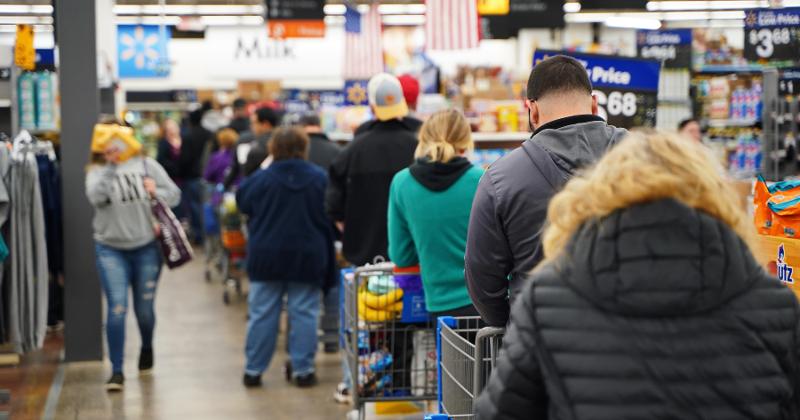Photograph: Shutterstock
By Jon Springer
Source: www.winsightgrocerybusiness.com, July 2021
Walmart, Costco could rebound most
They’re back.
Four times as many shoppers say they plan to shop in a store more often in 2021 than those who plan to shop less often, with big-box retailers and small discounters among those most likely to see the benefits, according to a new consumer survey from the Feedback Group.
Results of the “Grocery Shopping Intention Monitor” indicated that many shoppers anticipate returning to shopping in-stores for food and groceries, across a variety of formats, after the COVID pandemic suppressed both the frequency of store trips and the variety of outlets consumers shopped a year ago—and forced many shoppers into visiting outlets they may not have intended to shop were it not for the crisis.
“As we look forward, our research reveals that many shoppers anticipate returning to shopping in-stores for food and groceries across a variety of formats. As a result, it is important for stores to provide the best possible experience to welcome food shoppers back and retain them,” said Brian Numainville, a principal with The Feedback Group, Lake Success, N.Y.
Notably, several of the stores consumers said they were most likely to return to frequently may have benefitted less from the trip consolidation trend a year ago.
Walmart leads the way with the highest expected shopping ratio (34% of shoppers say they will shop there more often vs. 11% saying they would shop there less), followed by Costco (33% more/16% less), dollar stores (29% more/12% less) and grocery stores, including chains and independents (28% more/11% less). When considering rural shoppers, the stores with the highest expected shopping ratio are Aldi, dollar stores, Sprouts, Walmart, and Trader Joe’s. Among boomers, Meijer, Trader Joe’s, Winco, Aldi and Costco show the highest expected shopping ratios.
Online, Amazon Wins
Two times as many shoppers indicate they will shop more online (40%) vs. less (20%) in 2021. The online expected shopping ratio is strongest among urban shoppers (54% more/17% less) and millennials (57% more/19% less), while the youngest generation, Gen Z, has a flat expected shopping ratio.
Whole Foods and Amazon Fresh show the strongest expected shopping ratio for online shopping, followed by Walmart.com, Target.com and Costco.com. Stores with the top expected shopping ratio among millennials are led by Whole Foods (with a ratio of four times more vs. less), followed by Walmart.com, Target.com, Amazon Fresh, Costco.com and Instacart. Among urban shoppers, Whole Foods again comes out on top, followed by Walmart.com, Amazon Fresh, Target.com and Fresh Direct.
“As the findings illustrate, Amazon, both with Whole Foods and Amazon Fresh, appear to have the greatest overall momentum in terms of shoppers expecting to use their online services more often,” said Doug Madenberg, Feedback Group principal. “Whole Foods also resonates the strongest among urban and millennial shoppers, and Amazon Fresh also places in the top group of stores among these shoppers, along with Walmart, Target, Costco, Instacart and Fresh Direct. Absent from the top group are grocery stores, showing that work remains for the channel to continue to strengthen online offerings.”
Convenience, Price Drive Dollar Channel Trips
About 4 in 10 shoppers indicate they shop at a dollar store every two weeks or more frequently, the survey indicated. Among those who shop a dollar store at least once every few months, about 3 in 10 shop for food or grocery items every two weeks or more often, driven by the convenience of the store/location (57%), price (54%), quality (43%) and for items or brands they like (41%). The categories mentioned as most purchased were chips/salty snacks (65%), candy (62%), cookies/crackers (60%), beverages (59%) and canned goods (52%).
“Since dollar stores had one of the higher expected shopping ratios for shoppers planning to shop in a store, it is clear that convenient store locations and price are appealing to dollar store shoppers for several product categories,” Numainville said. “Although fresh categories like meat and fruits/vegetables presently show the lowest purchasing levels, as reported by shoppers, these categories may grow as dollar stores continue to expand their offerings.”
The study was based on a nationally representative sample of 2,250 respondents who shopped in-store and/or online for food and groceries in the prior 30 days.

